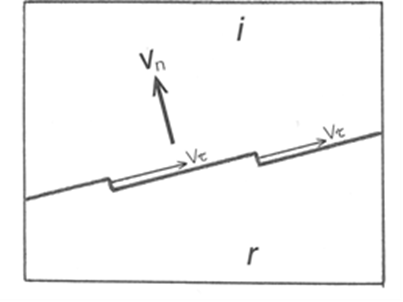-
Paper Information
- Paper Submission
-
Journal Information
- About This Journal
- Editorial Board
- Current Issue
- Archive
- Author Guidelines
- Contact Us
American Journal of Condensed Matter Physics
p-ISSN: 2163-1115 e-ISSN: 2163-1123
2016; 6(1): 17-19
doi:10.5923/j.ajcmp.20160601.03

On Physics of Magnetization
Yuri Mnyukh
76 Peggy Lane, Farmington, CT, USA
Correspondence to: Yuri Mnyukh, 76 Peggy Lane, Farmington, CT, USA.
| Email: |  |
Copyright © 2016 Scientific & Academic Publishing. All Rights Reserved.
This work is licensed under the Creative Commons Attribution International License (CC BY).
http://creativecommons.org/licenses/by/4.0/

Experimental observations reported in Nature are in accord with our concept that spin orientation is fixed in the structure of the atomic spin carrier. It follows that magnetization (change of the spin orientation in a crystal matter) is realized by rearrangement of the crystal structure, and not by spin rotation in that structure, as the standard theory assumed. The rearrangement occurs by nucleation and propagation of interfaces according to the general contact nucleation-and-growth mechanism.
Keywords: Magnetization, Spin rotation, Nucleation-and-growth, Ferromagnetism
Cite this paper: Yuri Mnyukh, On Physics of Magnetization, American Journal of Condensed Matter Physics, Vol. 6 No. 1, 2016, pp. 17-19. doi: 10.5923/j.ajcmp.20160601.03.
Article Outline
- The experimental facts reported in Nature [1-3] are indicative of the need for changing the current interpretation of magnetization mechanism. Magnetization, whether it is caused by application of magnetic field or changing temperature, is presently believed to be a "rotation" ("switching", "reversal") of spins in the crystal which can remain intact. The new interpretation, initially put forward in 2001 [4], coherently accounts for all puzzling observations made in [1-3]. It states that spin orientation is a permanent feature of the spin carrier (atom, molecule), therefore magnetization inevitably involves turning the carriers. In other words, magnetization is inseparably linked with rearrangement of the crystal. Thus, in order to comprehend the real magnetization process, understanding of the molecular* mechanism of solid-state rearrangements is required. The following is a synopsis of the general mechanism of structural rearrangements, deduced from the studies presented initially by the sequence of journal articles [5-18] and then summarized in the book [4]. • Rearrangements in a solid state are realized by crystal growth involving nucleation and propagation of interfaces. Neither ferromagnetic phase transitions (see below), nor ferroelectric phase transitions [19] are excluded from this rule. Not a single sufficiently well-documented example exists of this process being homogeneous (cooperative).• The nuclei are located in specific crystal defects - microcavities of a certain optimum size. These defects contain information on the condition (e.g., temperature) of their activation and the orientation of resultant crystal lattice. The nucleation can be epitaxial, in which case a certain orientation relationship between the initial and resultant structures is observed.• The interface is a rational crystallographic plane of the resultant crystal lattice. It is named "contact interface" owing to direct molecular contact between the two lattices without any intermediate layer. The molecular rearrangement proceeds according to edgewise (or stepwise) mechanism (Fig.1) consisting of formation of "kinks" (steps) at the flat interface and filling them, molecule-by-molecule, until the layer is complete, and building successive layers in this manner.
 Abstract
Abstract Reference
Reference Full-Text PDF
Full-Text PDF Full-text HTML
Full-text HTML